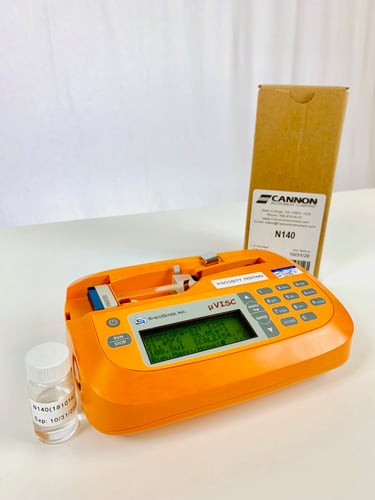We often get questions from customers regarding how the VROC® chips that are used in our microVISC™ are calibrated and the process behind it. Our VROC chips read viscosity by measuring the pressure drop as a test liquid flows through its rectangular slit microfluidic channel. During viscosity calibration, we use NIST Traceable, CANNON Instrument Company® Oils ranging from 2 to 20,000 cP at 20°C. We put the chip in a calibrated microVISC™ and select the appropriate oil for use in the chip. As our microVISCs are typically used in a room temperature environment, we calibrate our chips under the same conditions. Typically, our temperatures range is from 20-23°C.
To model our expected viscosity, we use the exponential model for shear viscosity defined by Reynolds in 1886, where T is temperature, µο and b are coefficients.

Both coefficients are calculated from CANNON’s data points from their provided certificate with every lot of oil. For microVISC, the typical points we use are the data points at 20°C and 25°C. Between these two points, we can accurately calculate the expected viscosity.
We run our chips through a series of flow rates to confirm accuracy and error values from 5% to 95% of the chips pressure scale. Once a chip passes our tests for accuracy, the chip is cleaned using a series of solvents, often times flushed with Heptane and 99% IPA to ensure a perfectly clean chip before you are ready to go!
If you found this helpful or have any questions/inquiries, comment below or contact us here!
If you are an existing customer and would like additional tips and details about your RheoSense viscometer, we encourage you to visit the customer portal or contact your RheoSense technical specialist!



